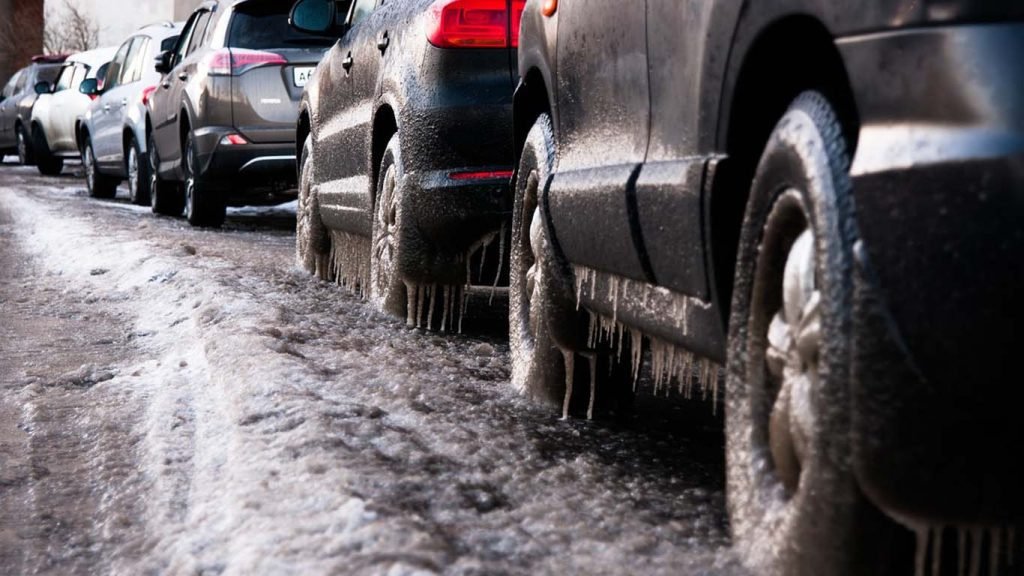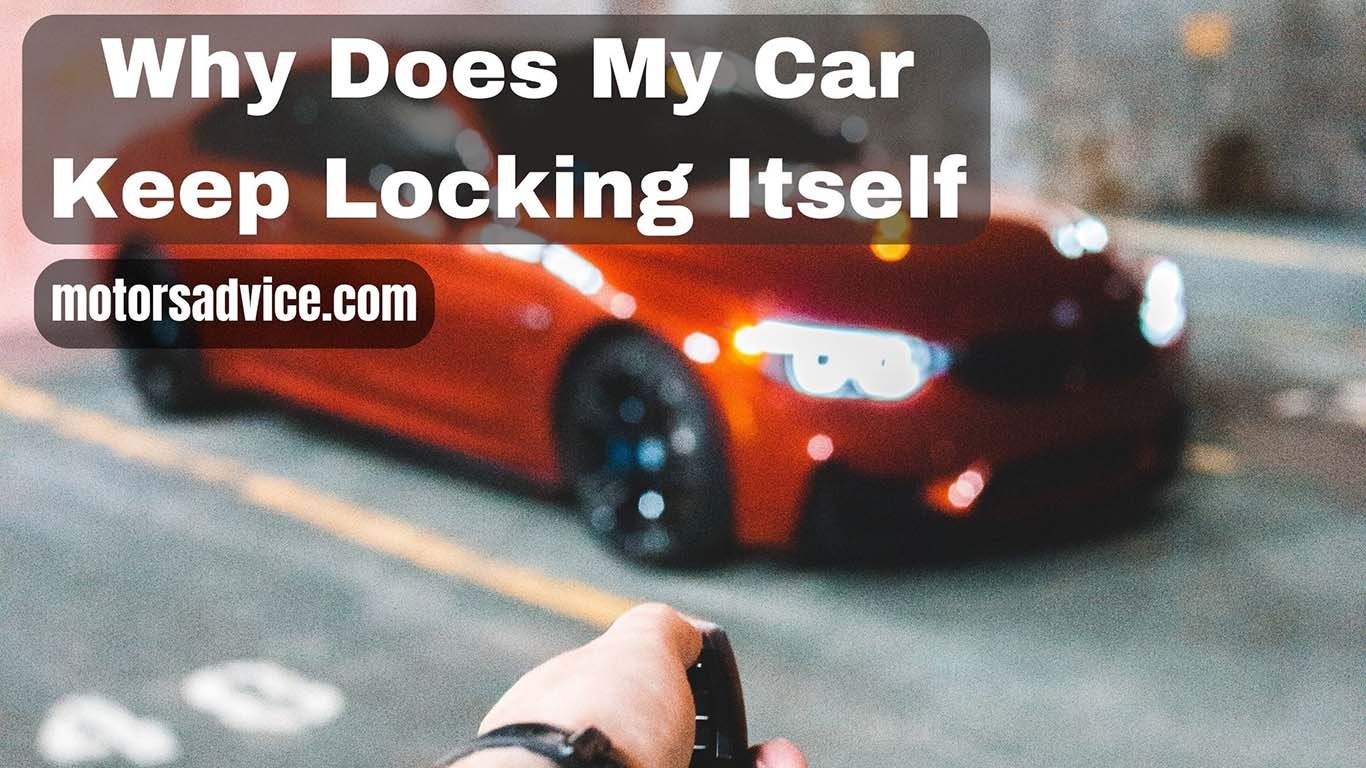As a parent, I’m no stranger to my car locking and unlocking itself while my child plays with the key fob. However, you should be concerned when a vehicle locks and unlocks on its own. So, why does my car keep locking itself?
In general, electrical issues within the central locking system are responsible for cars locking and unlocking themselves. Typically, a malfunctioning actuator that loses electrical signals is the culprit. Sometimes, it can also be due to worn-out wires or a faulty door sensor, causing the car locks to engage and disengage independently.
While most problems with locking systems require a mechanic’s expertise to pinpoint the exact cause, there are steps you can take to investigate and narrow down the issue. Below, you’ll find insights into common causes of malfunctioning car locks and more!
Why does my car keep locking itself?
Understanding the issues with power locking systems in vehicles is crucial. While central locking systems are convenient, their centralized nature can be problematic. Unlike older vehicles with localized door lock issues, a single problem in the electrical system can affect all locks in modern cars. Common causes of such issues include:
Damaged Key Fob:
Sometimes, the sole reason for car lock issues can be traced back to a depleted key fob battery or a poorly programmed fob.
Key fobs are intricately programmed to function exclusively with your specific vehicle. When this programming or the fob’s microchip malfunctions, it leads to unresponsive locks.
Solution and Repair Cost:
To rule out a battery issue, it’s advisable to test the voltage of both your key fob and the car. Typically, a mechanic or locksmith can assist in repairing or replacing a damaged key fob. There are two methods for key fob repair.
One involves taking it to a mechanic for reprogramming, with parts costing between $100 and $450, a repair time of about one to two hours, and labor costs ranging from $50 to $400.
Having a spare key fob is a smart precaution, as they are more affordable and provide continued vehicle access if one breaks. The second option is a DIY approach, requiring a programmable key fob suitable for your car’s make and model, with parts cost similar to the mechanic’s option. Regardless of your skill level, DIY is feasible and budget-friendly, especially since key fobs often come with programming instructions dependent on your car’s make and model.
Broken Lock Actuator:
A car’s lock actuator translates electrical signals into physical locking or unlocking actions. Over time, wear and tear affects its wires and gears, especially in heavily used vehicles. Symptoms of a failing actuator include unusual noises during locking, erratic behavior, and total lock failure. Typically, a mechanic is needed to replace the actuator, involving disassembling the car door.
Solution and Repair Cost:
The actuator is a small but elusive car component that can be challenging to locate. Understanding its signals requires expertise in-car electronics. We advise you to consult a mechanic for precise diagnosis and repair or replacement solutions.
Typically, fixing an actuator costs around $200, though factors like the car’s make and model can escalate it to $700. Fortunately, manual door opening remains an option if the actuator malfunctions, but we recommend a prompt repair.
If you are a DIY guy and, of course, want to save money, you might try fixing the door actuator by seeing the following video.
Faulty Door Sensors:
Contemporary vehicles are equipped with numerous sensors that constantly monitor various aspects, including the proper closure of doors, usually signified by dashboard alerts. Unfortunately, these sensors can deteriorate, leading to erroneous signals and door lock issues.
Solution:
Identifying this problem can be quite challenging, even for experienced mechanics. They typically explore other potential causes before pinpointing the faulty door sensor as the culprit, which ultimately requires replacement.
Electrical Fuse is Blown:
The electrical fuse in a vehicle serves as a safeguard for its electrical parts. If there’s a problem causing circuit overcharge, the fuse will blow, protecting the car. A blown fuse can disrupt the locks and lead to minor mechanical lock issues.
Solution:
Handling blown fuses independently isn’t advisable; the safer approach is to consult a nearby mechanic. Attempting to meddle with blown fuses poses significant hazards and may result in more extensive problems.
The Weather:

Regrettably, weather conditions can affect a car’s locking mechanisms. Excess moisture or ice infiltration can disrupt their operation. When temperatures plummet, car door frames may contract, leading to a misalignment between the door and lock.
Furthermore, cold weather can deplete a car’s battery, rendering it powerless to manage the locking system.
Solution:
It is something you can only control by parking your car inside a garage.
Broken Wires:
In the United States, an average vehicle harbors more than 50 pounds of copper wiring, a vital component for the existence of power locks. These wires serve as conduits, carrying electrical energy from the car’s battery to activate the mechanical operations of the locks. However, when these wires or their insulation deteriorate and become frayed, they can interrupt the flow of electrical signals, leading to malfunctioning locks that exhibit behaviors such as self-locking/unlocking or complete failure. Faulty wires can also be a reason why your steering wheel buttons not are not working.
Solution and Repair Cost:
Identifying damaged wires necessitates the use of a voltage detector to check for the presence of electrical current. Ideally, testing each wire is time-consuming. Luckily, many mechanics employ vehicle computer diagnostics for efficient identification and repair.
The pricing for a wiring fuse repair hinges on the extent of the wire damage. Typically, a single fuse repair ranges from $100 to $150. However, rewiring may incur expenses between $1200 and $1500.
Damaged Solenoid:
Some automotive locks are equipped with a solenoid, similar to the actuator. This magnetic device plays a crucial role in controlling the lock’s latch. When you activate the “unlock” function, the solenoid retracts the latch within the door, while it latches when you engage the “lock” feature through the door or key fob. If this solenoid becomes damaged, it can result in malfunctioning locks, leading to jammed doors or an unresponsive door handle. Replacing a faulty solenoid is a task best left to professionals, as it necessitates disassembling the car door.
Solution and Repair Cost:
The solenoid is located within the vehicle’s door, necessitating door disassembly for replacement or repairs.
The solenoid replacement cost is influenced by the labor involved. Hence, a high-end car will incur greater expenses than a budget model.
For instance, a sports car commands a significantly higher price tag compared to a Toyota sedan. This is primarily due to the intricate door design of sports and exotic vehicles, which increases repair costs.
Why Does My Car Keep Locking Itself – FAQs
How to Prevent Your Car’s Self-Locking?
The key to avoiding automatic self-locking is resolving the underlying electrical issues. As long as this problem persists, your car keeps locking and unlocking while driving. Addressing the root cause is essential to stop this issue.
Is Automatic Locking Common in Car Doors?
Some vehicles have an automatic locking feature that serves as a safety measure. This function typically activates when the vehicle reaches a specific speed. Additionally, certain cars may automatically lock their doors after a predetermined period to deter theft.
Is It Possible to Deactivate Automatic Door Lock Programming?
Certain newer vehicles offer the option to disable automatic lock settings. Check your key fob for a “disable” button and press it to deactivate auto-lock functions. For some cars, like the Ford Focus, you can turn off auto-lock by following these steps:
- Insert the key and start the car.
- Press the “unlock” button on the door three times.
- Turn off the car.
- Press the “unlock” button three times.
- Start the car again.
- Wait for the horn to chirp, indicating programming mode.
- Press “unlock” and then “lock.” The horn will honk, indicating auto-lock deactivation.
- Turn off the ignition and wait for a confirmation honk, signifying the successful programming change.
Is it possible for a Car to Inadvertently Lock its Doors with the Keys Inside?
Experiencing the annoyance of locking your keys inside your car is all too familiar. However, contemporary automobiles are equipped with a mechanism that can automatically lock the doors after a certain period, typically determined by the DPI. If you happen to leave your keys inside while you’re outside the vehicle, there’s indeed a chance they might get locked inside. Our suggestion: always keep your keys with you or consider leaving a window ajar.
What’s the Procedure for Reinstating Automatic Locks?
- Insert the key into the ignition.
- Depress the door’s unlock button three times consecutively.
- Power down the vehicle.
- Activate the unlock function on the fob three times.
- Power up the vehicle.
- Listen attentively for the audible signal of the horns, signifying the initiation of the programming procedure.
- Execute a single press of the unlock button, followed by a single press of the lock button. Expect two horn honks, confirming the reactivation of auto-lock.
- Subsequently, switch off the ignition and exercise patience. Allow a minute or so for a confirming honk from the horn.
- Finally, ensure the functionality of the locks. You can assess this by observing if the locks engage after a specified interval when the vehicle is powered off. Remain inside the vehicle, and if the locks respond, the programming has been successfully reinstated. Alternatively, embark on a test drive to validate the proper operation of the locks.
Is Lock System Damage Covered by Auto Insurance?
Car insurance can include coverage for lock system damage, but eligibility hinges on the root cause. Wear and tear-related wire erosion usually isn’t covered, but if it results from a hungry rodent like a rat or rabbit, your insurance might provide coverage. Reach out to your insurer to validate your specific coverage.
Fixing Central Locking Issues: Should You Attempt It?
In most cases, we advise DIY enthusiasts to avoid tackling central locking issues. Car electrical systems are complex and demand specialized expertise to mend without inadvertently causing harm. Trust certified mechanics or automotive locksmiths to address any central locking concerns with your vehicle.
Wrapping Up
Hope you got the answer to your query: why does my car keep locking itself? Since lock-related issues often stem from electrical problems, not delaying their inspection is crucial. Malfunctioning locking mechanisms compromise your vehicle’s security and can leave it vulnerable to theft and expensive repairs. To prevent getting stuck with a significant automotive problem, seek a trustworthy locksmith or mechanic to examine your car’s central locking system.
